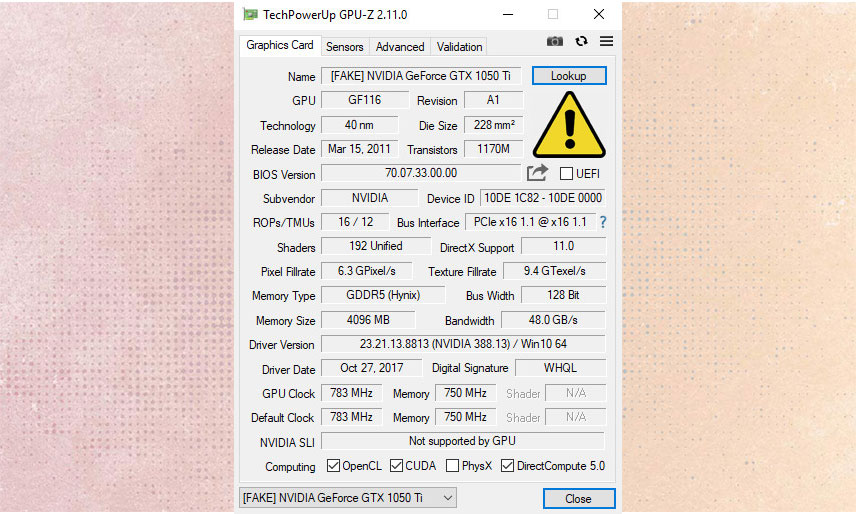GPU-Z Can Now Sniff Out Fake Nvidia Graphics Cards
Counterfeit goods are found in pretty much every product category. Sometimes these objects are supposed to fool other people, like sneaker "reps" and knock-off handbags, but often they're just supposed to dupe someone into spending their money on a fake product. TechPowerUp's GPU-Z utility now allows its users to discover fake Nvidia graphics cards that claim to offer far better performance than they can actually provide.
The chances of your graphics card featuring a weaker GPU than expected are low. TechPowerUp told Bleeping Computer that most of these fake cards are sold in China, and although some "can make it to the West through eBay sellers," we suspect most Tom's Hardware readers are buying through reputable sellers instead of sketchy eBay auctions originating from China. Still, having the ability to check isn't going to hurt anything.
TechPowerUp described its work on this spoof-proof feature in GPU-Z's release notes:
"We worked extensively on the ability of GPU-Z to detect fake NVIDIA graphics cards (i.e cards not really having the GPU advertised on the box). GPU-Z now prepends "[FAKE]" to the Graphics Card name field, and lights up with a caution triangle. This capability is forward compatible for the supported GPUs (listed in the changelog), so for example, it will be able to detect a fake RTX 2060, which in reality uses a GK106 GPU."
GPU-Z was also updated with Turing-specific features that allow it to extract the BIOS used in RTX 2000 series cards, monitor independent fans used in the same graphics card, and reveal more information about HDMI and DisplayPort connections. Other recent changes have focused on bug fixes--one resolved a problem with Valve Anti-Cheat, another fixed Radeon RX 400 GPU usage monitoring for cards with new drivers, etc.
You can find the latest release of GPU-Z on TechPowerUp's website.
Get Tom's Hardware's best news and in-depth reviews, straight to your inbox.

Nathaniel Mott is a freelance news and features writer for Tom's Hardware US, covering breaking news, security, and the silliest aspects of the tech industry.
-
Co BIY Testing one of these fake cards, doing a full GPU review and maybe a field guide to spotting one would make a good article.Reply -
cryoburner Reply
The "fake" cards are already more or less tested and reviewed, since they are simply older, low-end cards from some years back with their firmware edited to make them appear to be newer cards. Performance will likely be much like the older card, assuming the card isn't crashing due to discrepancies in hardware capabilities like VRAM, and the exact level of performance will vary depending on which card was rebadged, which could vary from card to card. You wouldn't exactly want to buy one from the people who are ripping people off, either.21406408 said:Testing one of these fake cards, doing a full GPU review and maybe a field guide to spotting one would make a good article.
It probably wouldn't be bad for them to make a guide about spotting them, though I suspect that most of those who would buy such a card might be unlikely to read an article like that on Tom's Hardware to begin with. They should usually be pretty easy to spot though, seeing as they tend to be given some off-brand name, along with a cooler with a generic-looking plastic shroud. And perhaps most telling, being sold as "new" with a price typically far below what the name brand cards are being sold for. A new, off-brand 1050/1050Ti direct from China for $60? Eh... probably not.
